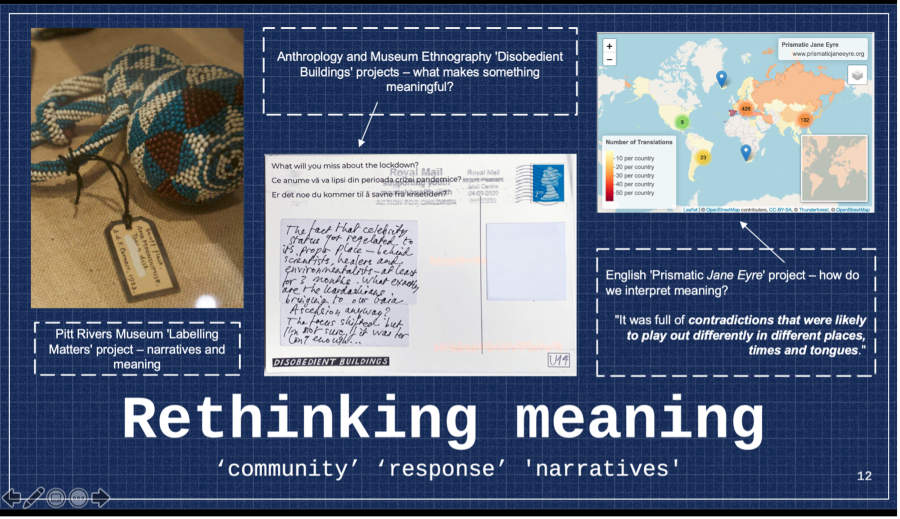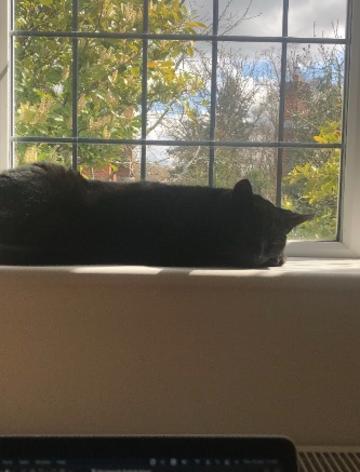Location, Location, Location
Heritage Collaborations Mapping Research
Gearing up for the next round of micro-internships in Trinity Term 2021, the Heritage Partnerships Team is pleased to feature this blog post by Seren Atkinson. Alongside three more interns, Seren recently completed a micro-internship with us, undertaking desk-based research to map the range of Oxford University's heritage-related collaborations across the world. Each intern had a particular disciplinary focus but also worked collaboratively to identify common themes and topics. This micro-internship was set up in close collaboration with the Careers Service of the University of Oxford.
On the afternoon of Thursday 8th week Hilary term, I and three other interns met over Teams with project supervisors Katerina and Olly for a briefing to kickstart our five-day micro-internship. Officially entitled ‘Heritage Collaborations Mapping Researchers’, our role was to survey the information available on the university’s various websites about projects relating to ‘heritage’ (to add to the interactive research map of the University’s Public Affairs Directorate, found here), and to make recommendations based on our findings. Despite the dismal March rain in the background, our call was extremely encouraging, and having bonded over our mutual love for Pride and Prejudice (2005 of course!), we soon began to sketch approaches to the task ahead. With a bit of preliminary research, we four interns decided to split up the research areas and take a selection from a range of disciplines, libraries, and museums. In doing so, we could research our own subjects in addition to more unfamiliar ones. I was entrusted with, among others, the departments of English Literature, Anthropology and Museum Ethnography, the Pitt Rivers Museum, as well as the formidable (at least to me!) domains of Chemistry and Computer Science.
On the first full day of our micro-internship, Monday of 9th week, we met again with Katerina and Olly for a virtual coffee break. In addition to the (much appreciated) social contact, this meeting was a lovely way to get to know the team better since our first meeting, and it was great being able to chat about what drew us to the heritage sector. Then we swiftly began our research. Katerina had provided us with a form with which to document the projects through a mixture of qualitative and quantitative information. Gradually, we began to get a clearer idea of what some of the more abstract terms we were using meant in practice – the word ‘project’ could mean, for example, multiple events, funded research proposals, or research partnerships. In the afternoon, our team met with Christopher Eddie, the university’s Public Affairs Directorate (PAD) digital communications manager, for a thought-provoking discussion of the potential of both our work and the OUHN’s global research map. After a bit more work, thus ended our first day!
The next day the four of us regrouped to discuss how we were finding the micro-internship. Communicating with the micro-interns was an invaluable aspect of this project for me, as not only did it create a motivating and friendly atmosphere, but it also allowed us to begin collating ideas about what conclusions we were drawing from our research. Making sure I kept to a regular schedule and checking in with the other interns also helped me keep on top of the work – and overall, we managed to research over 200 projects!
Fuelled by snack breaks and tea, I finished researching projects on the Wednesday of 9th week. From here, the four of us decided how we might best analyse the data we had collected: after all, whilst some of the data could be quantitatively analysed (such as the number of projects that had given information about funding, provided contact details of principal investigators, or described their timescales), much of the data were our own qualitative assessments. To move past this obstacle, we decided to create a shared spreadsheet where we could compile the raw data and list keywords/ buzzwords that we had noticed. From here we produced statistics analysing internet clarity and presence across the departments and the university, and some very funky word clouds of key terms.
On our final day (Friday 9th week) we added the finishing touches to our collaborative PowerPoint, and after a couple of rehearsals presented our findings to Katerina and Olly (who were both warm and encouraging!). As someone who gets quite nervous before presentations, our close group-work and preparation really helped me feel more confident about public (or rather, Teams) speaking. In addition to the statistics we had generated from our previous analysis, we also picked ‘case studies’ of projects that we felt had stood out to us for a variety of reasons, such as their innovative use of technology or how they related to ‘heritage’. After discussing my research with the team, I feel like I have a clearer conception of what ‘heritage’ might mean and how it intersects with academic research or public engagement initiatives. Producing a report of our findings was a really rewarding end to the micro-internship; this opportunity has definitely confirmed my desire to work in the heritage sector and has helped me plan where my next career steps will be!

A slide from our final presentation
Seren Atkinson is a second year English Literature undergraduate. She loves researching material and visual culture, particularly in relation to the written text, and walking around old libraries. Find Seren on Twitter @Seren_Atkinson.

While I was working hard, Monty was hardly working!


